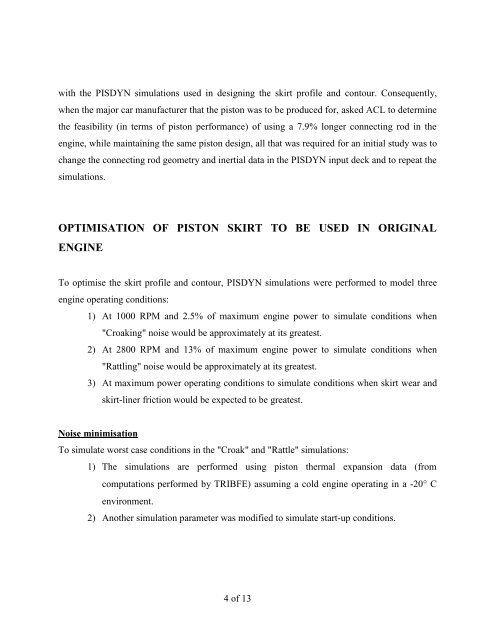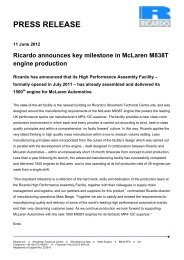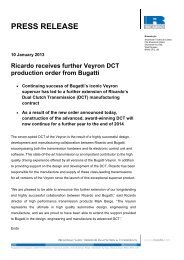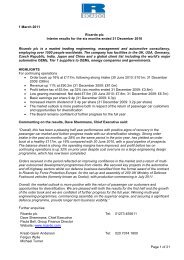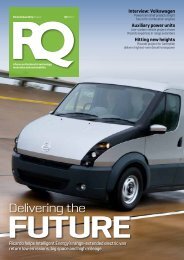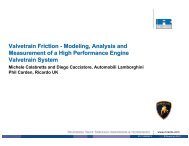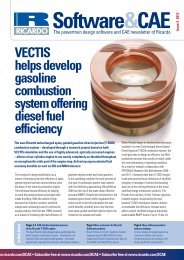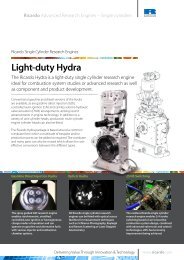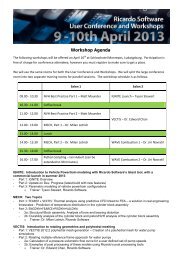CASE STUDY USING PISDYN OF THE EFFECT ON ... - Ricardo
CASE STUDY USING PISDYN OF THE EFFECT ON ... - Ricardo
CASE STUDY USING PISDYN OF THE EFFECT ON ... - Ricardo
Create successful ePaper yourself
Turn your PDF publications into a flip-book with our unique Google optimized e-Paper software.
with the <strong>PISDYN</strong> simulations used in designing the skirt profile and contour. Consequently,<br />
when the major car manufacturer that the piston was to be produced for, asked ACL to determine<br />
the feasibility (in terms of piston performance) of using a 7.9% longer connecting rod in the<br />
engine, while maintaining the same piston design, all that was required for an initial study was to<br />
change the connecting rod geometry and inertial data in the <strong>PISDYN</strong> input deck and to repeat the<br />
simulations.<br />
OPTIMISATI<strong>ON</strong> <strong>OF</strong> PIST<strong>ON</strong> SKIRT TO BE USED IN ORIGINAL<br />
ENGINE<br />
To optimise the skirt profile and contour, <strong>PISDYN</strong> simulations were performed to model three<br />
engine operating conditions:<br />
1) At 1000 RPM and 2.5% of maximum engine power to simulate conditions when<br />
"Croaking" noise would be approximately at its greatest.<br />
2) At 2800 RPM and 13% of maximum engine power to simulate conditions when<br />
"Rattling" noise would be approximately at its greatest.<br />
3) At maximum power operating conditions to simulate conditions when skirt wear and<br />
skirt-liner friction would be expected to be greatest.<br />
Noise minimisation<br />
To simulate worst case conditions in the "Croak" and "Rattle" simulations:<br />
1) The simulations are performed using piston thermal expansion data (from<br />
computations performed by TRIBFE) assuming a cold engine operating in a -20° C<br />
environment.<br />
2) Another simulation parameter was modified to simulate start-up conditions.<br />
4 of 13


